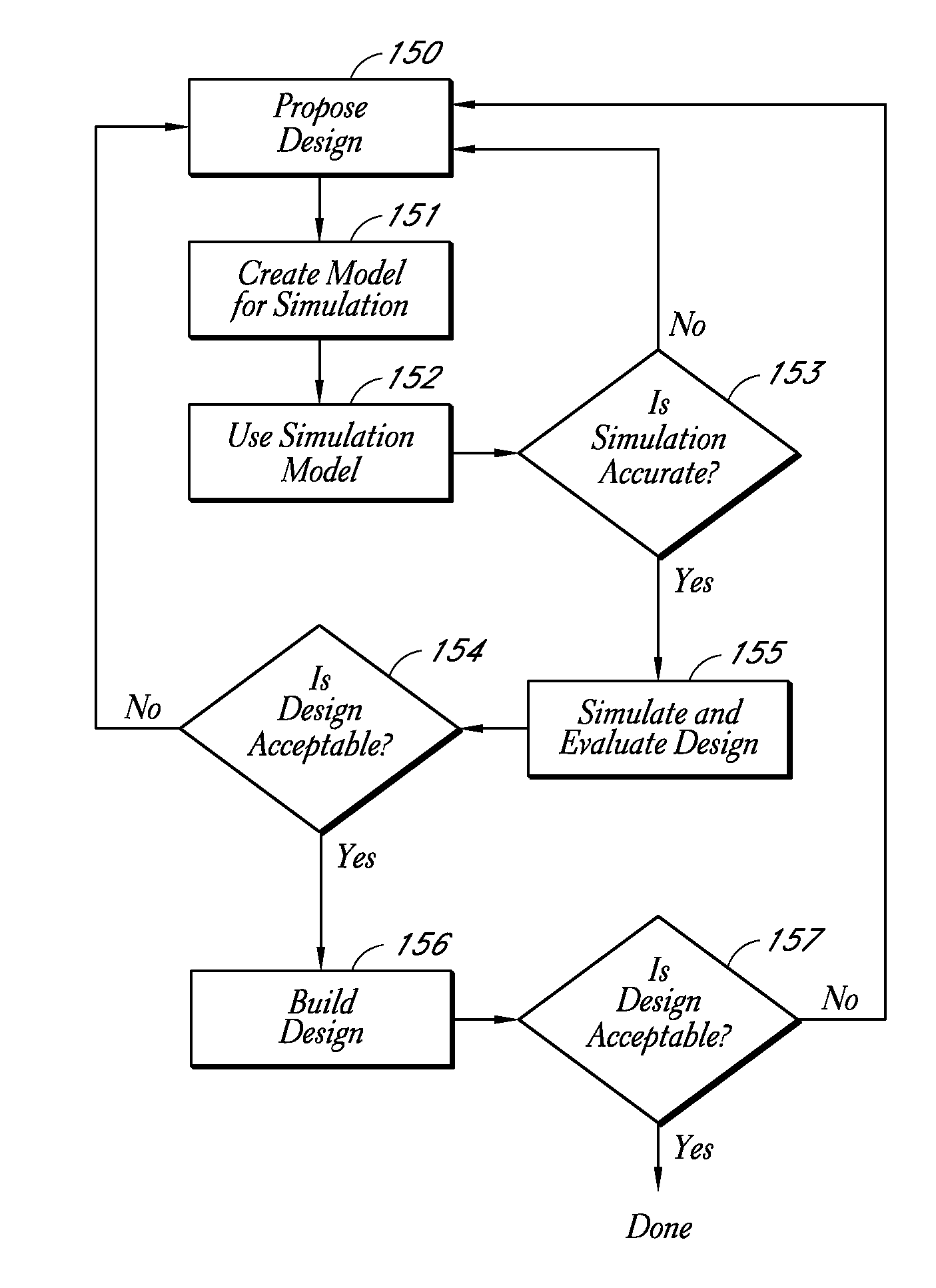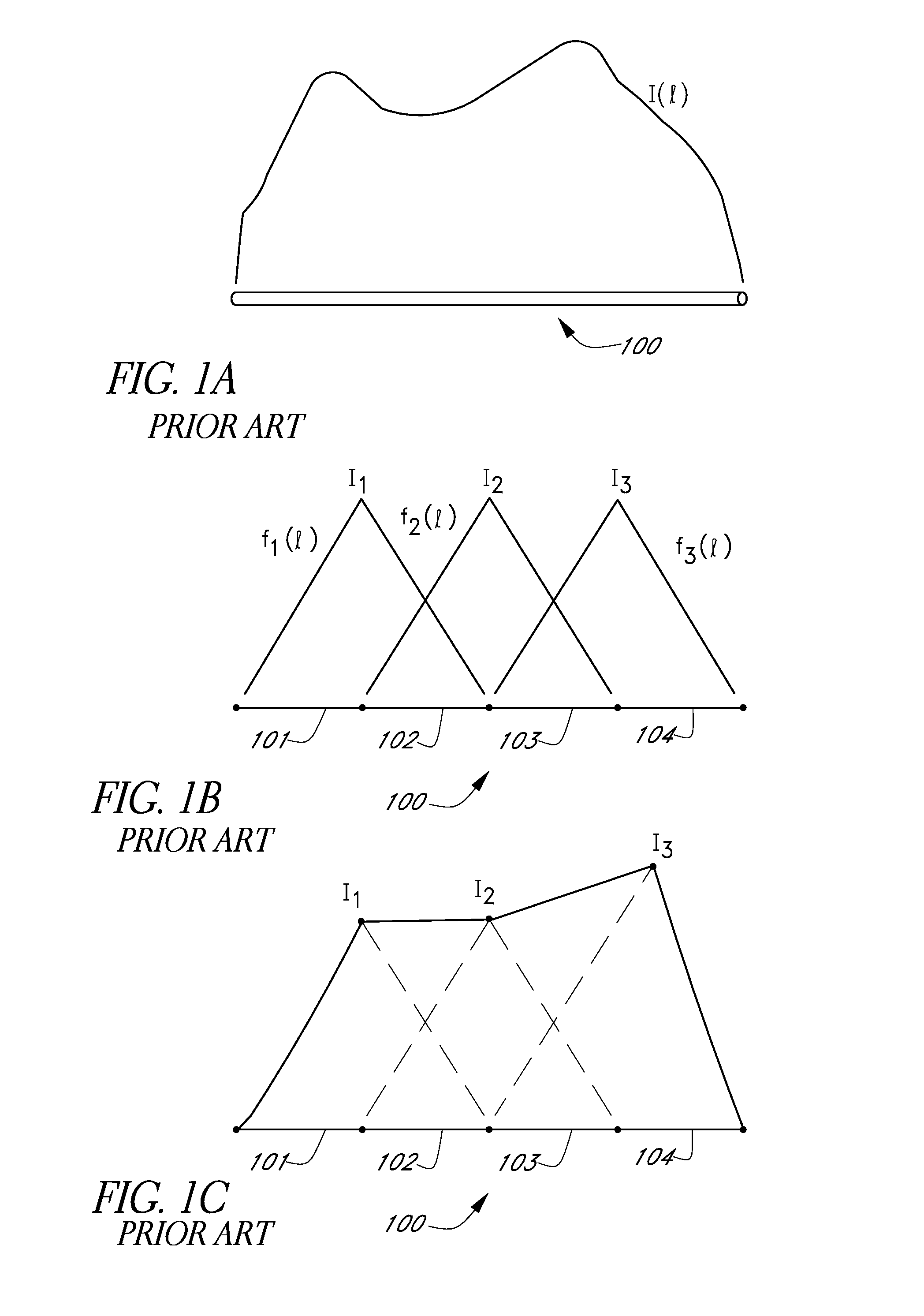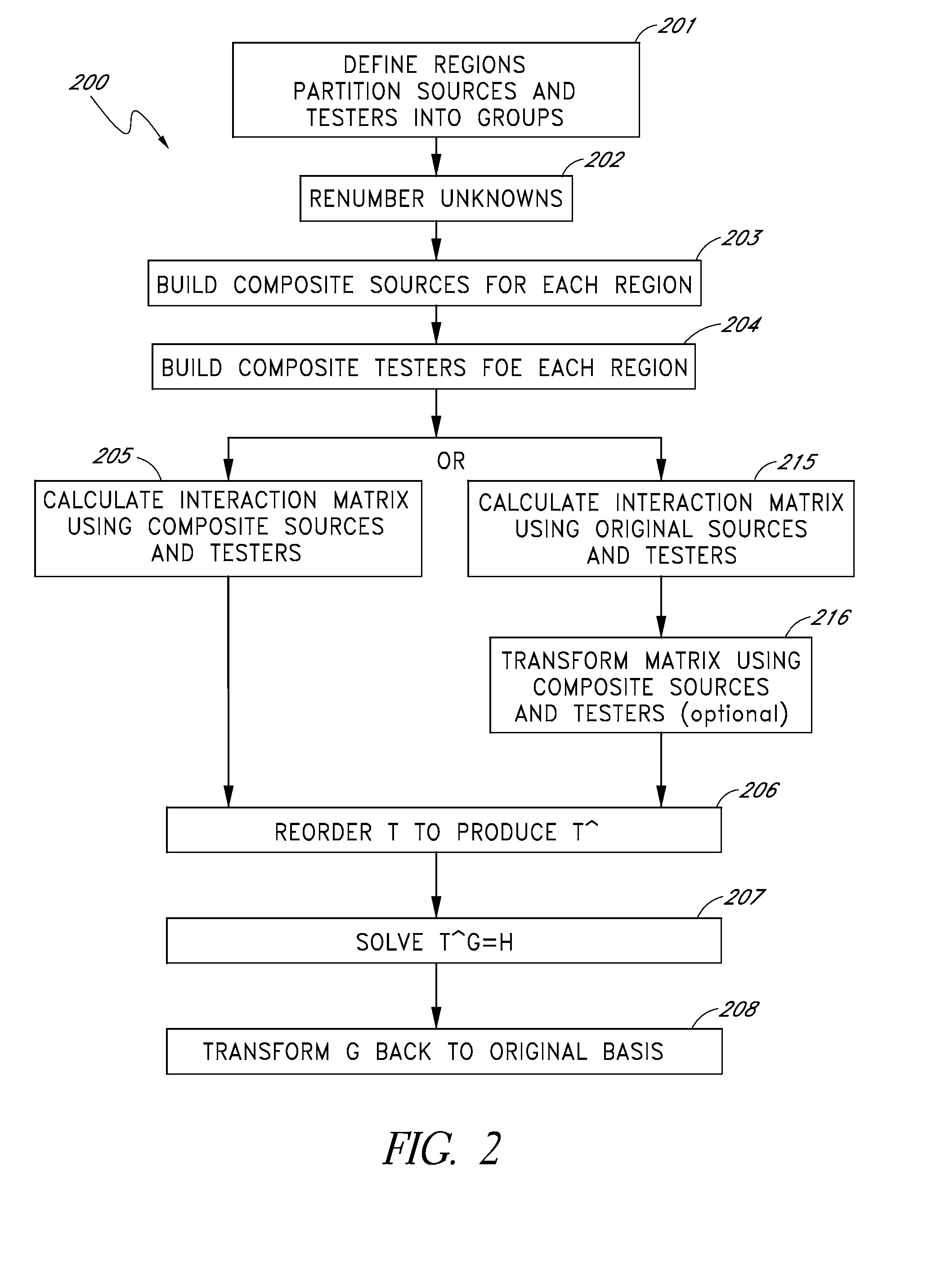Sparse and efficient block factorization for interaction data
a factorization and interaction data technology, applied in the field of sparse and efficient block factorization for interaction data, can solve the problems of large number of computer operations necessary to process the data stored in the interaction matrix, large number of such interactions, and relatively small change in sound volume, etc., to achieve fewer operations, improve efficiency, and enhance sparseness of the factored form
- Summary
- Abstract
- Description
- Claims
- Application Information
AI Technical Summary
Benefits of technology
Problems solved by technology
Method used
Image
Examples
Embodiment Construction
[0037] Many physical phenomena involve sources that generate a disturbance, such as an electromagnetic field, electromagnetic wave, a sound wave, vibration, a static field (e.g., electrostatic field, magnetostatic field, gravity field, etc) and the like. Examples of sources include a moving object (such as a loudspeaker that excites sound waves in air) and an electrical current (that excites electric and magnetic fields), etc. For example, the electric currents moving on an antenna produce electromagnetic waves. Many sources produce disturbances both near the source and at a distance from the source.
[0038] Sometimes it is convenient to consider disturbances as being created by an equivalent source (e.g., a fictitious source) rather than a real physical source. For example, in most regions of space (a volume of matter for example) there are a large number of positive electric charges and a large number of negative electric charges. These positive and negative charges nearly exactly ...
PUM
 Login to View More
Login to View More Abstract
Description
Claims
Application Information
 Login to View More
Login to View More - R&D
- Intellectual Property
- Life Sciences
- Materials
- Tech Scout
- Unparalleled Data Quality
- Higher Quality Content
- 60% Fewer Hallucinations
Browse by: Latest US Patents, China's latest patents, Technical Efficacy Thesaurus, Application Domain, Technology Topic, Popular Technical Reports.
© 2025 PatSnap. All rights reserved.Legal|Privacy policy|Modern Slavery Act Transparency Statement|Sitemap|About US| Contact US: help@patsnap.com



